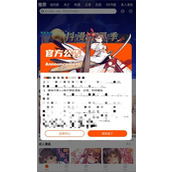Android 怎么用HttpURLConnection访问网络?
本文为大家介绍了Android 用HttpURLConnection访问网络的教程,不会的朋友快来看看吧!
一、 HttpURLConnection以GET方式访问网络:
HttpURLConnection connection = null;
try {
URL url = new URL("https://www.x**x*x.com/");
connection = (HttpURLConnection) url.openConnection();
connection.setRequestMethod("GET");//设置访问方式为“GET”
connection.setConnectTimeout(8000);//设置连接服务器超时时间为8秒
connection.setReadTimeout(8000);//设置读取服务器数据超时时间为8秒
if (HttpURLConnection.HTTP_OK == connection.getResponseCode()) {
//从服务器获取响应并把响应数据转为字符串打印
InputStream in = connection.getInputStream();
BufferedReader reader = new BufferedReader(new InputStreamReader(in));
StringBuilder response = new StringBuilder();
String line;
while (null != (line = reader.readLine())) {
response.append(line);
}
Log.d(TAG, response.toString());
}
} catch (Exception e) {
e.printStackTrace();
} finally {
if (null!= connection) {
connection.disconnect();
}
}
二、 HttpURLConnection以POST方式访问网络:
HttpURLConnection connection = null;
try{
URL url = new URL("https://www.x**x*x.com/");
connection = (HttpURLConnection) url.openConnection();
connection.setRequestMethod("POST");
connection.setConnectTimeout(8000);
connection.setReadTimeout(8000);
connection.setDoOutput(true);// 使用 URL 连接进行输出
connection.setDoInput(true);// 使用 URL 连接进行输入
connection.setUseCaches(false);// 忽略缓存
// 建立输出流,并写入数据
OutputStream outputStream = connection.getOutputStream();
DataOutputStream dataOutputStream = new DataOutputStream(outputStream);
dataOutputStream.writeBytes("username=admin&password=888888");
dataOutputStream.close();
if (HttpURLConnection.HTTP_OK == connection.getResponseCode()) {
// 当正确响应时处理数据
StringBuffer response = new StringBuffer();
String line;
BufferedReader responseReader =
new BufferedReader(new InputStreamReader(connection.getInputStream(), "utf-8"));
// 处理响应流,必须与服务器响应流输出的编码一致
while (null != (line = responseReader.readLine())) {
response.append(line);
}
responseReader.close();
Log.d(TAG, response.toString());
}
} catch (Exception e) {
e.printStackTrace();
} finally {
if (null!= connection) {
connection.disconnect();
}
}
注意:
1. HTTP访问是不允许在主线程进行的,否则会报错。因此上面的操作应该在新线程中进行。
2. 一般要用HttpURLConnection.getResponseCode() == 200来判断是否正常响应。为true则正常响应。
3. 在Android 2.2及以下版本,使用的是HttpClient,Android 2.3及以上版本,使用的是HttpURLConnection,而Android5.1之后废弃了HttpClient的相关Api。因此HttpClient用法不再进行研究。
4. 以POST方式提交数据时,每条数据要以键值对的方式提交,各条数据之间以&隔开。比如上面的代码中dataOutputStream.writeBytes(“username=admin&password=888888”);
5. 上面用到了StringBuilder和StringBuffer,没有什么特别用意,只是顺便用下。StringBuilder在单线程下比StringBuffer更高效,但不是线程安全的。
相关文章
精彩推荐
-
 下载
下载我的世界国际版老版
模拟经营 我的世界国际版老版我的世界国际版正式版是一款拥有超高自由度玩法是沙盒手游,经典
-
 下载
下载我的世界国际版完整版
模拟经营 我的世界国际版完整版我的世界国际服完整版是一款十分经典好玩的mc沙盒类游戏,在海
-
 下载
下载摩托车销售模拟器内置菜单中文版
模拟经营 摩托车销售模拟器内置菜单中文版摩托车出售模拟器,又名摩托车销售模拟器,这是一个以摩托车销售
-
 下载
下载船舶模拟2020最新版
模拟经营 船舶模拟2020最新版船舶模拟2020是玩法非常有意思的模拟驾驶游戏,高清3d画质
-
 下载
下载油管主播的生活2内置菜单版
模拟经营 油管主播的生活2内置菜单版油管主播的生活2内置菜单版是一款模拟养成类游戏,在这里你将体















